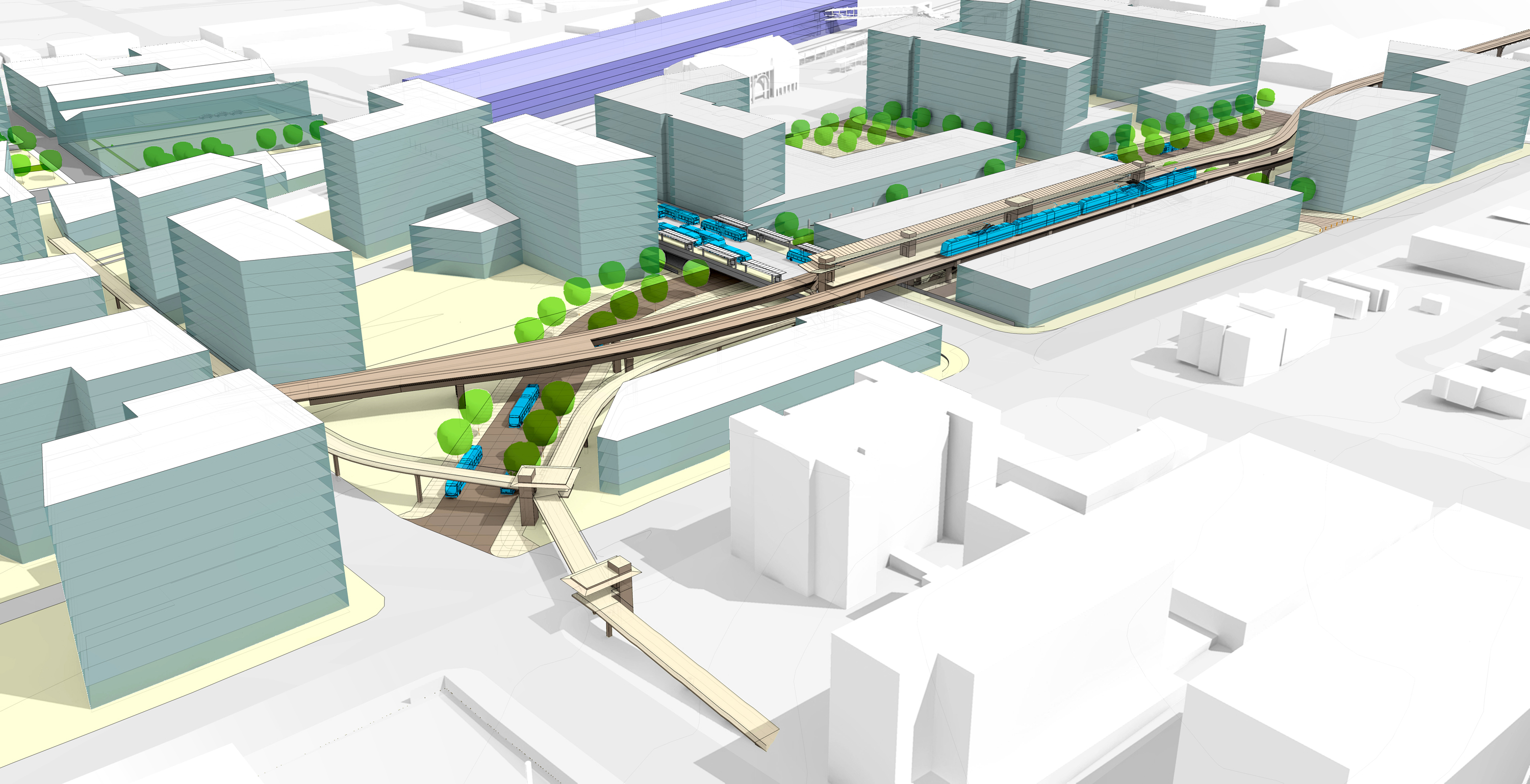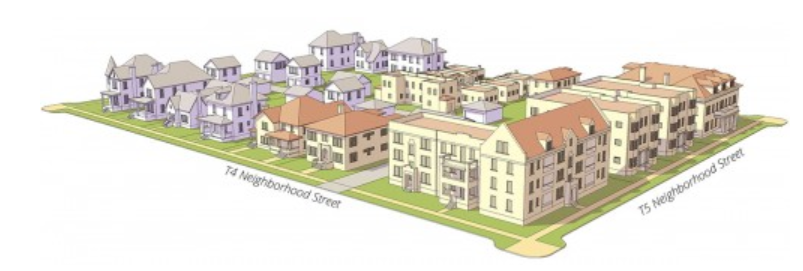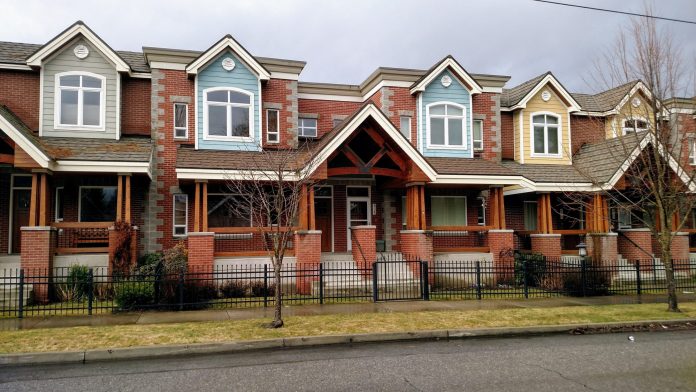This spring, California toyed with passing SB 827, an ambitious zoning preemption bill authored by State Senator Scott Wiener that would have allowed five-story apartment buildings within walking distance of high-frequency mass transit stops. Many Bay Area Rapid Transit (BART) stations and a good number of LA Metro stops are surrounded by low-density single-family zoning, which limits transit access and squanders those sizable investments. That bill ended up dying an early death in its first committee hearing in April, but the idea inspired housing advocates. It also paved the wave for a scaled down version applying only to BART stations that California Governor Jerry Brown signed Sunday.
It appears Washington state legislators may attempt to pick up the torch from California and pass a bill pushing zoning friendly to transit-oriented development.
State Senator Guy Palumbo (D-Maltby) provided The Urbanist with an early draft of “minimum density” legislation and has been distributing it around to local planning departments and other stakeholders in the Puget Sound Region. Areas of Washington state meeting the bill’s requirements would no longer be allowed to have big-lot single family zoning. Instead the bill would set up a tiered minimum zoning around rapid transit station and explicitly allow duplexes, triplexes, fourplexes, townhomes, and courtyard apartments (5 to 12 units), single-room occupancies, and accessory dwelling units (with no ownership requirement.)
Fine-tuning the Growth Management Act
The bill would push municipalities and counties to follow the spirit of the Growth Management Act (GMA) and encourage the region to build up rather that out. Passed in 1994, the GMA has been a check on suburban sprawl on the periphery of the Seattle metropolitan region; although plenty of suburban-style big-lot single-family housing has continued within the GMA’s borders. To make matters worse, some cities and neighborhoods within the GMA are taking very little growth. In fact, many predominantly single-family neighborhoods in booming Seattle actually have shrinking populations according to a Sightline Institute analysis.
The difficulty in adding urban-style housing in a region that is aiming to curb suburban sprawl has led to a situation where it’s hard for young people to get off the hamster wheel of every increasing rent checks and little prospect of saving enough to buy a home–even a modest backyard cottage or a small condominium. And because so much new housing is high-end apartments in high-cost neighborhoods, people who are looking for more affordable housing don’t have many options. Well, beyond drive until you qualify suburban single-family homes.
Maltby, Epicenter of Growth?
“At a high level, if Seattle was taking enough growth, we’d have downward pressure on prices,” Senator Palumbo said, adding the result is “massive problems in South Snohomish and in North Pierce County.”
Senator Palumbo represents the 1st legislative district (LD-1) which spans a wide cross-section of northwestern suburbia picking up Bothell, sections of Kirkland and Mountlake Terrace, and unincorporated communities like Maltby, North Creek, and Echo Lake.
“In D1 we’re at the epicenter of Seattle not taking growth,” Senator Palumbo said. “Everybody has to drive to qualify because they can’t afford to live in Seattle. People are getting pushed out father. Lake Stevens, Marysville, Arlington…”
“The GMA is breaking and we have to do something about it.”
Senator Palumbo said he started the conversation last year when he brought a bill (SB 6077) setting a minimum density of six dwelling units per acre across municipalities to his colleagues, but they deemed it too broad. He went back to the drawing board and tried to find a mechanism that would more specifically tailor the minimum density requirements. After looking at using a threshold based on the median home price, he determined it was hard to get good data at the municipal level, he said. Instead Senator Palumbo settled upon a trigger similar to the California’s SB 827 using proximity to transit.
Defining High Capacity Transit
“This time around we took a TOD focus,” Senator Palumbo said. The idea here is that areas with frequent transit access should allow transit-oriented development or TOD. The early draft legislation would affect a broad swath extending a mile in each direction from transit stops, although Senator Palumbo said how high to set levels and how far to extend the minimum density requirement would be negotiated and hammered out before the bill makes it to the floor.

First, the draft bill would use rent burden–defined as a household with monthly housing costs, including utilities, exceeding 30% of its household income–to trigger the minimum density mechanism. If more than 20% of households in a municipality are rent burdened, then the minimum density requirement would apply–at least if the city has any qualifying transit corridors.
Some may fear that a rent burden threshold would upzone low- and middle-income areas and let some high-income enclaves off the hook, but Senator Palumbo said that’s not the intent. Moreover, virtually all Puget Sound Region cities would presently meet the rent burden threshold, given our sky-high housing prices.
“We wanted a reasonable trigger and felt that rent burden was fair,” Senator Palumbo said, adding he wanted to “increase density where working folks can’t afford to rent a place.”
The draft bill does not define what high capacity transit is, but Senator Palumbo expects the final bill will. One definition he suggested was rail or bus service with frequency of 15-minute or better. Whatever is settled upon it will be best to have an airtight definition with little doubt to be exploited in an appeal. Seattle’s experience has showing that a frequent transit definition can be twisted by anti-development activists so almost no bus line lives up to the standard–at least without a long appeal process.
If the bill does not define high capacity transit, it would be up to the Washington State Department of Commerce to define.
To help deal with the costs associated with implementing the minimum density requirements, the draft bill would create a state grant program of up to $10 million per biennium to which municipal and county planning departments could apply for financial support.
Density Wedding Cake around Transit
The draft bill sets up tiers of zoning to raise the level of density possible near rapid transit. The 1/4 mile radius around qualify transit stations would need to allow significant density and the effects of the bill would stretch a mile out from transit stations. The proposed breakdown is as follows:
- 1/4 mile radius would need to allow 150 dwelling units per acre;
- 1/2 mile radius would need to permit 45 dwelling units per acre;
- 1 mile radius would need to allow 14 dwelling units per acre.

While the density bill could be a political football, Senator Palumbo said he wants to learn from his mistakes last time around.
“I can see how many people have different goals they want to achieve in this bill,” Senator Palumbo said. “My goals are narrow. One, make meaningful progress on increasing supply, and, two, center it around transit. Having been through this last year, I am okay with getting a meaningful incremental win versus no win. Some have suggested just doing a city-wide density requirement which, while ideal, is basically my bill from last year that couldn’t get out of committee. So I am trying to keep it TOD-focused because there simply isn’t a good argument against that density.”
Missing Middle Housing
“Missing middle is the key component,” Senator Palumbo said. “We need those affordable starter homes, triplexes, duplexes. They’re not zoned and they’re not being built.”

Seattle is adding tons of apartments, but the bulk of that growth is highrise and midrise development. Missing middle housing types are a small fraction of Seattle’s growth, and Senator Palumbo sees that as a problem, because he believes the region has pent up demand for single-family homes and condominiums and consumers prefer the smaller scale that missing middle offers.
“People want to buy single family homes,” Senator Palumbo said. “There are plans to put 20,000 people in Everett rather than Southwest Snohomish, but people aren’t moving to multifamily in Everett, they’re moving to single-family in Southwest Snohomish.”
Everett does have ambitious plans to densify its downtown, but Senator Palumbo is correct Everett’s rate of redevelopment has been rather modest thus far. Between 2010 and April 2018, Everett gained about 8,000 residents. Perhaps as light rail nears, Everett’s plans will bear full fruits, and ditto for other suburbs with city center hopes like Lynnwood and Shoreline.
In the meantime, a bill like Senator Palumbo’s could help fill in the gaps and zone for a greater variety of housing types.
The status quo is beginning to appear untenable as housing prices rise behind the means of most young families. At the same time, investment in social housing is falling well short of what’s needed.
Senator Palumbo frames his bill as a fix for a failing GMA law: “If we’re not going to do this, the GMA is not going to work.”
Whether that’s true or not, the minimum density bill certainly seems like an improvement.
Doug Trumm is publisher of The Urbanist. An Urbanist writer since 2015, he dreams of pedestrian streets, bus lanes, and a mass-timber building spree to end our housing crisis. He graduated from the Evans School of Public Policy and Governance at the University of Washington in 2019. He lives in Seattle's Fremont neighborhood and loves to explore the city by foot and by bike.


